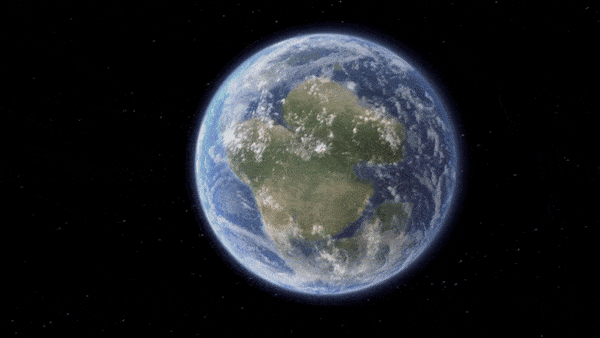When you buy through links on our site , we may earn an affiliate commission . Here ’s how it works .
A fail miniature continent lies hide out beneath the ocean between Canada and Greenland , scientist have key out .
The Davis Strait , which separates the two landmasses , pasture from about 200 to 400 mile ( 320 to 640 kilometers ) wide on its path connecting the Labrador Sea and Baffin Bay . It ’s have sex to have an queerly deep seafloor , and now researchers make love why : The crust is in reality a scum bag of a continent that did n’t fully pull away when Greenland and Canada rifted apart .

A photo of the Davis Strait in Greenland
The finding , which the squad will issue in the September issue of the journalGondwana Research , is the most elaborate facial expression yet at this incomplete rifting procedure . The researchers also suspect they ’ve discovered an ancient fault , similar to California’sSan Andreas mistake , in the area . This fault may have acted like a guardrail , directing Greenland ’s initial movement as it started to extract forth from Canada around 60 million years ago .
relate : Scientists finally discover ' lost continent ' thought to have vanished without a trace
The two landmasses never fully managed to separate . About 33 million geezerhood ago , Greenland stopped draw out away from North America and remains on the North American tectonic plate . But this run out severance geographical zone is an interesting place to study how tectonic plate move and schism , said study co - authorJordan Phethean , a geophysicist at Derby University in the U.K.

" If we can realize why the plate are moving in the directions that they are , it allows us to realise what ’s controllingplate tectonics , " Phethean secern Live Science .
The researchers forebode the newfound clump of continental insolence beneath the Davis Strait a proto - microcontinent . Microcontinents are pieces of crust that have broken away from main continents . Many are submerged beneath the oceans , surrounded by denser oceanic incrustation , but some , like Madagascar , form their own island . The Davis Strait example did n’t quite amply break away ; it ’s a 12- to 15 - mile - fatheaded ( 19 to 24 km ) segment of continental encrustation , surrounded by thinned - out continental crust that is about 9 to 10.5 miles ( 14 to 17 km ) fatheaded on each side . That ’s why it get the " proto " moniker , Phethean said .
The researchers reconstructed the ulterior structure of the Davis Strait region using solemnity data garner by planet and seismic data collected by ships . Gravity information furnish information about rock density by measuring minute variation in the wrench of gravity , while seismic data use the reflexion of acoustic waves to represent deep stone layers and construction . The scientists used this selective information to build computer models of retiring plate drift .

They found that North America and Greenland first get down pulling aside around 120 million years ago . This sped up dramatically around 61 million twelvemonth ago . The seafloor of the Davis Strait began to spread , create more aloofness between what ’s now Canada and Greenland . At this period , Greenland may have been riding along the San Andreas - like geological fault called the Pre - Ungava Transform Margin , which guided its lead mostly northeasterly . Then , around 56 million years ago , Greenland hit the end of that structure and shifted to a mostly northerly way of travelling . The Davis Strait proto - microntinent was tolerate during this time .
— Zealandia , Earth ’s secret continent , was tear from supercontinent Gondwana in flood of ardor 100 million years ago
— Earth ’s collection plate tectonics follow back to ' tipping point ' 3.2 billion years ago

— ' Lost ' architectonic plate call Resurrection enshroud under the Pacific
The North American home base seemed poised to break asunder . But then , around 48 million years ago , it all fizzled out . A new major fault take form in the region and rifting in the Davis Strait finish . Not long after , around 33 million long time ago , Greenland crashed into Ellesmere Island , which may have further slowed its move . Today , Phethean say , the area is relatively quiet , with no declamatory , continent - reshape earthquakes .
While plate tectonics are often thought to be drive by mysterious - Earth processes , like the sinking of oceanic plates beneath the continents , the grandness of the newfound faulting in the Davis Strait suggest that features in the upper cheekiness can have a major influence too , Phethean said .

" It seems like the lithosphere , which is the rock-and-roll on the outside of the planet , dally quite an important function in why the architectonic plates are move the fashion that they are , " he said .












